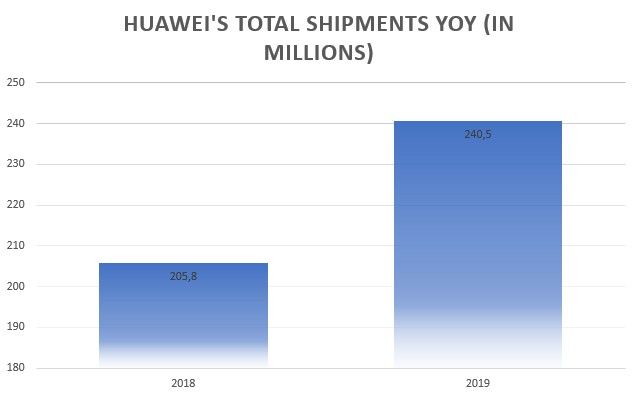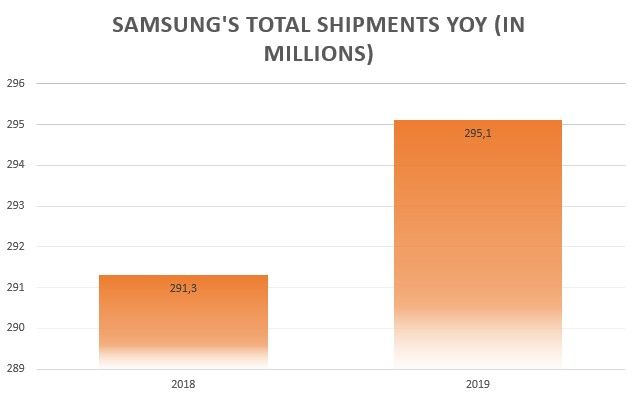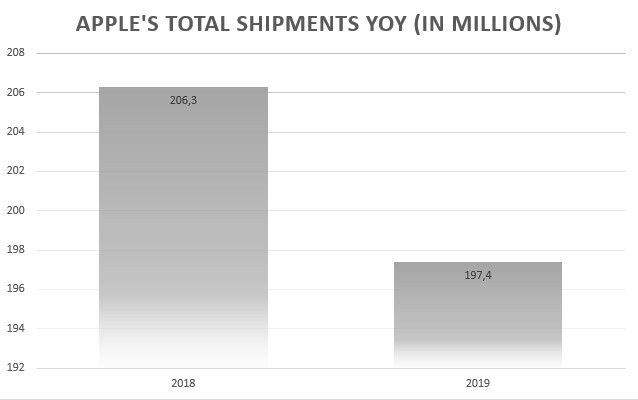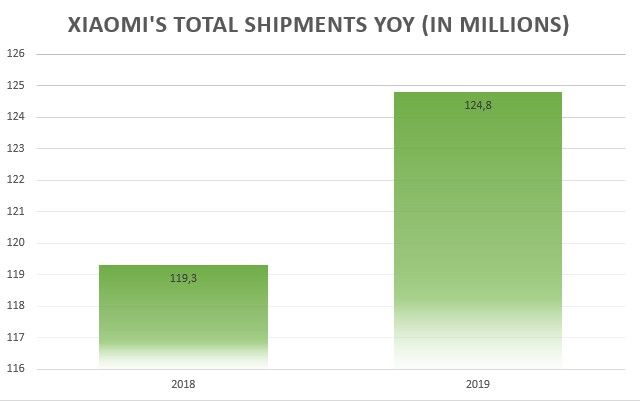Huawei overtook Apple to become the 2nd largest smartphone brand in 2019
Huawei is a company that has had a rocky history. Years ago, they were a relatively unknown player in the smartphone marketplace, with their popularity being mostly limited to their Chinese home market, but recently their popularity has risen to previously unthinkable levels. Each flagship the company put out was considerably better than the previous one, and their budget devices only serve to further improve on the company’s success. Yet, it’s no secret to anyone that the company was hit by harsh US sanctions earlier last year, which bar most US companies from engaging in business on Huawei.
Huawei phones through the second half of the year, in turn, looked a lot different than what they would have otherwise looked. They no longer carry any Google apps or services since the Trump administration forbids Google from doing business with Huawei. Despite this trade ban, though, the company has still managed to chug on forward and even keep building up market share. In fact, they have even managed to climb up to become the 2nd largest smartphone brand in 2019, jumping ahead of Apple in worldwide market share through the past year.
In order to put this better into perspective, here is a brief comparison of how the 4 biggest smartphone manufacturers have fared throughout 2019 in terms of sales and shipments.


Smartphone market share in 2018 compared to 2019.
Huawei
Huawei was probably the biggest surprise of 2019. As we said before, the company has been hit harshly by political sanctions, effectively barring the company from conducting any business with other US companies. Despite these sanctions, they have actually managed to climb in popularity, shipping just over 240 million units and growing up to become the second-largest smartphone manufacturer in the world with a 17% market share, just behind Samsung. This is partly attributed to massive growth in popularity in its home market, China, where these US sanctions don’t have as much effect — after all, phones there are already sold without Google stuff.


This is not to say that they didn’t have an effect, though. Huawei’s inability to bundle Google with their devices has left several of their key flagships, like the Mate 30 lineup and the Huawei Mate X, without a Western release at all. As such, global shipments dipped greatly, and so did global sales. They did surge as expected in China, though, so everything is going as well as they can go for Huawei in these circumstances. Given how Huawei is working on its own alternative to GMS called Huawei Mobile Services (HMS) and they even have an alternative OS in development, we might see Huawei launching their upcoming phones, such as the upcoming Huawei P40/P40 Pro, globally again in the short/long term, so these losses may perhaps turn around.
Samsung
Samsung remains at the helm of the smartphone ecosystem. The Korean company had a pretty successful 2019 where they saw slightly better numbers than they did during 2018, which is impressive since they were already pretty good to begin with. With a 20.9% market share globally and over 295 million units shipped, they are still the uncontested champion of the smartphone ecosystem. Samsung did a lot of things right last year, including the highly successful S10 and Note 10 lineups as well as the revamped Galaxy A-line and the foldable Galaxy Fold.


2020 should see improvements in this strategy including the S20 lineup, the Note series successors which are expected for the end of the year, as well as the upcoming Galaxy Z Flip, a rumored Galaxy Fold 2 and the continuation of new Galaxy A phones such as the Galaxy A51 and the Galaxy A71. This should all translate to similar numbers for the end of this year, hopefully.
Apple
Apple was also a company that saw steady growth in 2019, although in overall sales numbers, they fell through the cracks compared to Huawei, falling down to being the third biggest smartphone manufacturer in the world. Apple’s strategy varies very little year-on-year, and their 2019 lineup was almost identical to their 2018 lineup: the iPhone 11 succeeded the iPhone XR, the iPhone 11 Pro succeeded the iPhone XS, and the iPhone 11 Pro Max succeeded the iPhone XS Max — the only major variation being the naming strategy. As for actual numbers, the company shipped around 197 million units last year, seizing a 14% market share.


There is one small stat where Apple has the edge over Samsung and Xiaomi, though, and it’s the fact that they were number one throughout Q4 2019, shipping over 70 million units globally, as Samsung and Huawei shipped 68 million and 56 million respectively. This accounts for 18.9% of all smartphone sales by the end of the year. So while Samsung and Huawei still lead Apple in overall YoY sales, Apple does have the edge on QoQ growth. This year should see similar numbers, although a rumored release of the iPhone SE2/iPhone 9 could also give Apple a heavy boost as the phone would cater to a lower price point and be more affordable.
Xiaomi
Xiaomi is still sitting comfortably at 4th place just like in 2018, but growth, while definitely nowhere near the levels of the other smartphone manufacturers, did exist. The company captured over 8.8% of Q4 2019 market share, up from 6.9% in Q4 2018, accounting for a 2% increase — keep in mind that we’re talking at the global scale and millions of phones, and this increase means that, during Q4 2019, they shipped 7 million more phones than they did in Q4 2018. 2019 was a big year for Xiaomi as they saw noteworthy events, like the separation of the Redmi lineup into a Xiaomi sub-brand and the release of flagship-grade devices such as the Xiaomi Mi 9 and the Redmi K20 Pro, as well as mid-rangers such as the Redmi Note 7, Note 7 Pro, Note 8, Note 8 Pro, and the Xiaomi Mi A3, so this growth makes sense.


As Xiaomi further deepens and polishes this strategy, we fully expect these numbers to increase even more and more. We’ve already seen noteworthy events, such as their separation of POCO into an independent brand, take place this year, and we’re only 1 month into the year, so growth is fully expected going forward from now.
Source 1: Canalys / Source 2: Strategy Analytics / Source 3: Counterpoint Research / Source 4: Kantar
The post Huawei overtook Apple to become the 2nd largest smartphone brand in 2019 appeared first on xda-developers.
from xda-developers https://ift.tt/3aYNFWv
via IFTTT
Aucun commentaire: